UPSC Daily Current Affairs- 27th August 2023 | Current Affairs & Hindu Analysis: Daily, Weekly & Monthly PDF Download
| Table of contents |

|
| Seethakali |

|
| Rail-Sea-Rail Transportation |

|
| India-Greece Relations |

|
| UN Commission on International Trade Law (UNCITRAL) |

|
| 7th GEF Assembly |

|
| Parboiled Rice |

|
| Near vs Far sides of the Moon |

|
GS-I
Seethakali
Subject: History
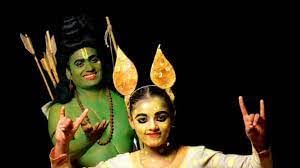
Why in News?
The Perinad Seethakali Sangham member group is all set to perform outside Kerala for the first time.
About Seethakali:
- It is a unique centuries-old folk art form that is believed to have originated at Perinad in the Kollam district of Kerala.
- This art form was first performed some 150 years back by the people of Vedar and Pulayar communities.
- Themes
- It is based on certain episodes taken from the Indian epic Ramayana.
- Mythic characters such as Rama, Seetha, Ravana and Hanuman come alive in Seethakali performances that portray the tale of Seetha’s journey, from the time she accompanied Rama to the woods till her ascent to the heavens.
- In the early times, Seethakali was performed as part of the harvest festival Onam.
- From Atham star till the 28th day after Onam, the performers who belong to the subaltern communities go from one house to another performing this art.
- The props and instruments used during performances are all made of natural materials like bamboo and palm leaves.
- The costumes and the make-up are loud and eye-catching.
- The characters of Rama and Laxmana appear in green since the colour is used to represent gods and goddesses in Kathakali.
- Currently, in Kerala, there is only one registered Seethakali performing group – Perinad Seethakali Sangham.
Source: The Hindu
GS-II
Rail-Sea-Rail Transportation
Subject: Government Schemes
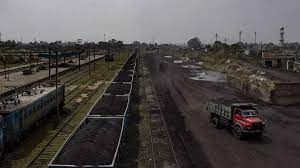
Why in News?
The Ministry of Coal is promoting the Rail-Sea-Rail (RSR) transportation strategy, aimed at streamlining the movement of domestic coal.
What is Rail-Sea-Rail (RSR) Transportation?
- About:
- It is an innovative multimodal transportation strategy.
- Integrates rail and sea routes for seamless coal transportation from mines to ports and end-users.
- Aims to enhance logistical efficiency and reduce transportation costs.
- Addressing Coal Movement Challenges:
- RSR is designed to address challenges related to efficient coal movement from production centers to consumption regions.
- A significant portion of domestic raw coal dispatch, around 75%, is attributed to major coal-producing states like Odisha, Chhattisgarh, and Jharkhand.
- The Ministry of Coal recognizes the need to augment coal production to meet the growing demand for energy. In light of this, the ministry has projected a substantial increase in coal production, targeting a Compound Annual Growth Rate (CAGR) of approximately 7.7% by FY’30.
- Leveraging Coastal Shipping:
- Coastal shipping has emerged as an economical and environmentally friendly mode of transporting goods, including coal.
- As part of the RSR initiative, efforts are being made to fully utilize the potential of ports along India's Southern and Western coasts.
- This optimisation enables the efficient movement of coal to powerhouses located in states like Gujarat, Maharashtra, Karnataka, Goa, Tamil Nadu, Kerala, and Andhra Pradesh.
- Cost Optimization and Competitive Pricing:
- Opting for RSR could result in significant cost savings.
- Potential savings of around Rs. 760-1300 per ton for end-users in Southern India.
- These cost savings can make domestically produced coal more competitive against the total landed cost of imported coal.
- Reducing Congestion and Enhancing Logistics:
- Presently, railways handle about 55% of coal evacuation. The Ministry of Coal envisions raising the railways' share in coal evacuation to 75% by FY'30.
- One of the primary goals of this initiative is to reduce congestion on traditional rail routes, which often face bottlenecks due to high traffic. The focus on alternative routes, including Rail-Sea-Rail (RSR), is expected to alleviate this congestion and streamline logistics.
- Growth and Future Prospects:
- Rail-sea-rail transportation of coal has witnessed remarkable growth, experiencing an increase of approximately 125% over the past four years.
- This growth trajectory indicates the effectiveness and viability of RSR as an alternative mode of transportation. With India's coal production expected to nearly double within the next seven years, the success of RSR becomes even more crucial in ensuring an uninterrupted supply of coal to consumption centres across the country.
- Challenges in Rail-Sea-Rail Coal Evacuation:
- Robust rail and port infrastructure is required for efficient Rail-Sea-Rail coal transport and handle increased capacity.
- There is a need to develop risk mitigation strategies to address potential challenges such as adverse weather conditions, technical glitches, and disruptions in the transportation chain.
- Ensuring seamless collaboration between various Ministries involved in Rail-Sea-Rail strategy implementation for smooth execution.
What are the Initiatives Related to the Coal Sector in India?
- UTTAM (Unlocking Transparency by Third Party Assessment of Mined Coal).
- Scheme for Harnessing and Allocating Koyala (Coal) Transparently in India (SHAKTI).
- Online Coal Clearances System: Provides a single window access to its investors to submit online applications for all the permissions / clearances and approvals granted by the Ministry of Coal.
- Coal Allocation Monitoring System (CAMS): Monitor the allocation of coal by Coal India Limited to States, States to Single Nodal Agency(SNA) and SNA to such consumers in a transparent manner.
- Commercial coal mining: The government has introduced commercial coal mining for private companies, allowing them to bid for coal blocks and sell coal in the open market.
Source: The Hindu
India-Greece Relations
Subject: International Relations
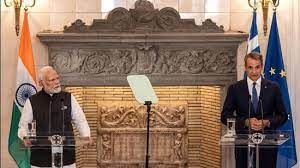
Why in News?
Prime Minister Narendra Modi paid an official visit to Greece, officially the Hellenic Republic.
Outcomes of the Summit
- Upgrade in Relations: Both the countries upgraded Greek-Indian bilateral ties to the level of a "Strategic Partnership” and agreed to work to further expand bilateral cooperation in political, security and economic spheres.
- Bilateral Trade: The leaders also directed that both sides shall work to double bilateral trade by 2030.
- MOU: They took note of the signing of the MOU on Cooperation in the field of Agriculture, including the establishment of a Hellenic-Indian Joint Sub-committee on Agriculture for facilitating sectoral cooperation for mutual benefit.
- Free Movement of Workforce: Both leaders agreed that an early finalization of a Mobility and Migration Partnership Agreement (MMPA) would be mutually beneficial, facilitating in particular the free movement of workforce between the two countries.
Tomb of Unknown Soldier
- The Prime Minister paid tributes at the ‘Tomb of Unknown Soldier’ in Athens.
- It is a war memorial located in Syntagma Square in Athens, in front of the Old Royal Palace. It is a cenotaph dedicated to the Greek soldiers killed during various wars.
- Thereafter, he was accorded a Ceremonial Guard of Honour.
Grand Cross of the Order of Honour
- The Prime Minister was conferred with the Grand Cross of the Order of Honour by the President of Greece.
- He is the first foreign Head of Government to receive this honour.
- The Grand Cross of the Order of Honour is conferred by the President of Greece to prime ministers and eminent personalities who by reason of their distinguished position, have contributed to enhancing the stature of Greece.
- The Order of Honour was established in 1975.
Overview of India and Greece Relations
- Diplomatic relations between Greece and India were established in 1950.
- Greece participated with India in the Six-National Delhi Declaration on Nuclear Disarmament in 1985.
- Both the countries pledged reciprocal support for election to the non-Permanent seat in UNSC.
- It supported India at the Nuclear Suppliers’ Group in 2008, and 2016, MTCR, WASSENAAR arrangements, Australia Group.
- The country has also refrained from taking a diplomatic position on controversial issues in India’s domestic politics.
- Institutional Mechanism: The two main forums for conducting bilateral talks are: Joint Economic Committee (JEC) and Foreign Office Consultations (FOC). It meets alternatively in Delhi and Athens.
- Greece has consistently been supportive of India’s core foreign policy objectives and India concurs with Greece’s emphasis on promoting international law and regional security.
- The economic and commercial relations between the two countries continue to grow. The bilateral trade stood at nearly $2 billion in 2022-23.
- At the military level, India and Greece had signed a Memorandum of Understanding (MoU) on Defence Cooperation in 1998, which was followed by joint programmes of the two militaries and periodic visits of Indian warships at the Souda Bay in Crete, the most important naval base in the Mediterranean Sea.
- After 1998, military interactions have been visiting by our NDC teams (2002, 2003, 2008 and 2022), transits by IAF Mirage 2000 ferries in 2004 involving a landing in Greece and two port calls by 2 Indian Naval Ships in 2003 and visits of 4 Indian Naval ships in July 2006 and 2009.
Significance of India-Greece Cooperation
- Location and Position of Greece: Greece is a member of both North Atlantic Treaty Organisation (NATO) and the European Union (EU), and its location in the Eastern Mediterranean Sea makes it a country embedded in the Western security network.
- It has emerged as a dynamic independent sea power in the Mediterranean, upgrading its military power, diplomatic network with its allies especially the United States (US) and France, and also with both Israel and the Arab states.
- A new international order uniting three major seas (Mediterranean Sea, Red Sea and Gulf) and three continents (Europe, Asia and Africa) is being witnessed.
- The addition of India as the major pole of this network shall create a powerful bloc, extending from Europe and the Mediterranean Sea to the Indian Ocean and the Himalayas.
- Support on Mutual Interest: At the diplomatic level, India and Greece can support each other on issues of mutual interest.
- Indo- Pacific Region: Greece is a seafaring nation and it currently hosts one of the greatest merchant fleets globally and thus its vital interests are structurally intertwined with freedom of movement in the seas. This is a common ground with India, a leading power in the Indo-Pacific region.
- Joint Exercises: The presence of Indian naval forces in the Mediterranean in the framework of joint Indo-Greek aeronautical exercises would be a clear symbolic and practical message of power projection across the Eurasian landmass.
- Strategic partnership with Greece, a NATO and EU member, would further strengthen the notion of India as a valuable partner of Europe in Asia.
Way Ahead
- A few decisive steps have already been undertaken to promote relations between the two countries, and some specific additional steps can further enhance and deepen the strategic cooperation between India and Greece.
- India is the core state of Asia and a global power, while Greece is an essential partner in the Mediterranean Sea and a member of both NATO and the EU. The two countries can deepen their cooperation in various fields by building on their military and diplomatic synergies.
- The strategic alignment of India and Greece in the new geopolitical environment would cater to the national interests of both countries.
Source: The Hindu
UN Commission on International Trade Law (UNCITRAL)
Subject: International Relations
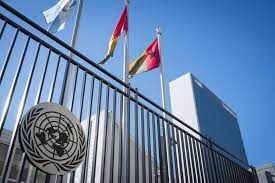
Why in News?
Recently, India and Iran dropped the foreign arbitration clause in the Chabahar port issue.
About the UN Commission on International Trade Law (UNCITRAL):
- It is a subsidiary body of the UN General Assembly, established in 1966.
- Mandate: To further the progressive harmonisation and unification of the law of international trade.
- Membership:
- The Commission is composed of 60 member States elected by the General Assembly.
- The 60 member States include 14 African States, 14 Asian States, 8 Eastern European States, 10 Latin American and Caribbean States and 14 Western European and other States.
- The General Assembly elects members for terms of six years; every three years, the terms of half of the members expire.
- India is a founding member of this organisation.
Key facts about Chabahar Port
- It is a seaport in the Sistan-Balochistan province of Iran, on the Gulf of Oman, at the mouth of the Strait of Hormuz.
- It is a deep-water port with direct access to the Indian Ocean that is outside the Hormuz Strait.
- Its geographic proximity to countries such as Afghanistan, Pakistan, and India, as well as its status as a key transit centre on the burgeoning International North-South Transport Corridor.
Source: The Hindu
GS-III
7th GEF Assembly
Subject: Environment

Why in News?
Environmental leaders from 185 countries gathered in Vancouver, Canada for the Seventh Assembly of the Global Environment Facility (GEF).
About
- This meeting comes at a time of significant diplomatic momentum with the historic Global Biodiversity Framework deal reached at COP15 and the high seas treaty agreed on in New York City, New York, in March 2023.
Global Environment Facility (GEF)
- It is the global body that coordinates financing for international efforts to address climate change, biodiversity loss, pollution, and factors inhibiting land and ocean health.
- It was established on the eve of the 1992 Rio Earth Summit and meets every 4 years. United Nations Development Programme (UNDP) is a founding member of the GEF.
- The GEF Trust Fund was established to help tackle our planet’s most pressing environmental problems. Funds are available to developing countries and countries with economies in transition to meet the objectives of the international environmental conventions and agreements.
- The GEF was selected to manage the new fund at the COP15 Convention on Biological Diversity summit in December 2022
Key Highlights of Meeting
- Establishment of Global Biodiversity Framework Fund (GBFF): The Global Biodiversity Framework Fund (GBFF) was finally ratified and launched .
- The new Global Biodiversity Framework Fund (GBFF) has been designed to mobilize and accelerate investment in the conservation and sustainability of wild species and ecosystems, whose health is under threat from wildfires, flooding, extreme weather, and human activity including urban sprawl.
- Governments, non-profits and the private sector can now contribute their funds here to ensure that the world meets the goals and targets of the Kunming-Montreal Global Biodiversity Framework (GBF) formulated by the Convention on Biological Diversity (CBD) by 2030.
- Prioritizing LDSs: It will also prioritize support for Small Island Developing States and Least Developed Countries, which will receive more than a third of the fund’s resources. This is the first time there would be funds channeled to non-state actors like the indigenous communities.
- Under Target 19 of GBF, at least $200 billion per year will need to be raised by 2030.
Need of such an initiative
- The launch of the GBFF has been particularly significant as it aims to address and assist the brunt of climate change borne by developing countries.
- By allocating a third of the funds resources to least developed states and 20% to indigenous communities, it aims to take concrete steps in conserving wild species and protecting biodiversity for future generations.
Source: DTE
Parboiled Rice
Subject: Economy
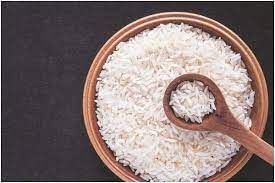
Why in News?
The Central Government recently imposed a 20% export duty on parboiled rice.
About Parboiled Rice:
- Parboiled rice, also called converted rice, is partially precooked in its inedible husk before being processed for eating.
- It happens before rice is milled, that is, before the inedible outer husk is removed to yield brown rice but before brown rice is refined to make white rice.
- In some Asian and African countries, people have been parboiling rice since ancient times as it makes the husks easier to remove by hand.
- The main steps of parboiling are
- Soaking: Raw, unhusked rice, also called paddy rice, is soaked in warm water to increase the moisture content.
- Steaming: The rice is steamed until the starch converts into a gel. The heat of this process also helps kill bacteria and other microbes.
- Drying: The rice is slowly dried to reduce the moisture content so that it can be milled.
- Husking: The dried, partially cooked rice is then milled to remove the outer husk. The result is parboiled rice.
- Parboiling changes the colour of rice to a light yellow or amber, which differs from the pale, white colour of regular rice.
- During parboiling, some water-soluble nutrients move from the bran of the rice kernel into the starchy endosperm. This minimises some of the nutrient loss that normally happens during refining when making white rice.
- Benefits:
- Parboiling rice improves its texture, increases its shelf life, and provides health benefits.
- Parboiled rice is higher in fibre and protein than white rice.
- Parboiling reduces the stickiness of rice, so it yields fluffy and separate kernels once cooked.
- Additionally, parboiling inactivates the enzymes that break down the fat in rice. This helps prevent rancidity and off-flavors, increasing shelf-life
- Notably, parboiled rice has significantly more thiamine and niacin than white rice. These nutrients are important for energy production.
- Potential downsides:
- It’s less nutritious than brown rice.
- It takes a little longer to cook.
Source: Times of India
Near vs Far sides of the Moon
Subject: Science and Technology
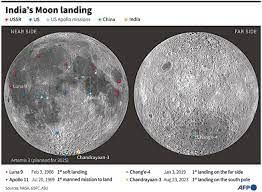
Why in News?
The Vikram lander of Chandrayaan-3 landed on the near side of the moon.
What is the near side of the moon?
- The near side refers to the portion of the moon (about 60%) that is visible to us.
- It is always the same side that is visible from Earth because the moon takes the same time to rotate about its axis as it does to circle around the Earth. However this doesn’t imply that half the moon is in perpetual darkness.
What is the far side of the moon?
- The ‘dark side’ is always faced away from the Earth.Thus it is dark only in the sense that it is mysterious and its various topographical features are hidden.
- The ‘new moon’ or when the moon is invisible from Earth is the time when the other ‘far side’ of the moon is bathed in sunlight and continues to receive light for nearly a fortnight.
- Soviet spacecraft Luna 3 in 1959 photographed it and the Soviet Academy of Sciences released an atlas of these images. Astronauts aboard the Apollo 8 mission of 1968 were the first humans to see the far side of the moon.
Difference between the Near side and far side
- The major difference between the two sides is that the near side is relatively smoother and has many more ‘maria’ or large volcanic plains compared to the far side.
- On the far side, there are huge craters, thousands of kilometers wide, which have likely resulted from collisions with asteroids.
- While both sides of the moon in its formative phase were similarly bombarded, the crust on the near side is thinner because of which, the volcanic lava in the lunar crust has flowed more extensively into the thinner side and filled up its craters.
- The resulting plains that have thus formed are far more conducive to space missions because they provide relatively flat terrain for landers and rovers.
Source: The Hindu
|
38 videos|5293 docs|1118 tests
|















